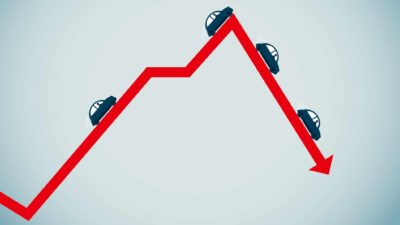This article was originally published on Fool.com. All figures quoted in US dollars unless otherwise stated.
Amazon's (NASDAQ: AMZN) much-anticipated stock split will take place on June 3. Shareholders approved the 20-for-1 stock split at the company's annual meeting on May 25.
If you're wondering how Amazon's stock split will impact your portfolio, below is a crash course on how stock splits work.
Behind the scenes of Amazon's upcoming stock split
Stock splits have been taking over headlines in 2022. In March, Amazon joined the tech gang by announcing that its 20-for-1 stock split was approved by the board of directors. The stock shot up after the news, but shares of the tech behemoth tumbled to their 52-week low a few days before the company's 2022 annual shareholders' meeting.
Amazon's stock has experienced a few bumps and bruises, but it won't impact the stock split. Shareholders gave Amazon the green light to move forward with a stock split at the annual shareholder meeting. All shareholders on record as of May 27 will see 19 additional shares of stock for every one share they own on the big day. If you have two whole shares of Amazon stock in your account by the deadline, you'll receive 38 additional shares after the stock split.
The stock split will take place on June 3, and the price per share will reflect the split on June 6. This will make it easier for smaller investors to buy shares of Amazon at an affordable price.
Stock splits won't make you rich overnight
Although stock splits tend to stir up excitement among investors, it's not as glamorous as it sounds. A stock split in itself won't make you rich overnight. It's more of a cosmetic transformation. Every share of stock will be divided into smaller pieces. This gives more people a chance to own whole shares of the stock at a cheaper price.
You can think of a stock split like exchanging a $20 bill for 20 singles. Although you have more dollars in your hand, the value of the money in your possession is still the same.
The stock split will allow investors to buy whole shares of Amazon at a cheaper price. After Amazon's stock split, the four-figure stock price will drop to $115 if the stock is trading at $2,300 before the stock split.
The future of Amazon's share price
It isn't uncommon for a company's stock price to explode after a stock split. However, you can't guarantee that Amazon's stock price will shoot up after the split.
The best move you can make is to invest in companies based on the underlying business. Go behind the scenes and evaluate the business by asking the following questions:
- Is the company's revenue sustainable?
- What factors are driving revenue?
- Are there any threats or weaknesses that can interfere with future growth?
By answering these questions, you'll be forced to do your research and determine if the company is a good fit for your goals and risk tolerance. A stock split may be a motivator to jump in, but it won't be enough to drive the performance of a company over the long term.
Selling Amazon stock after the split
If you decide you don't want to hang on to your extra shares after the stock split, you might have to pay taxes. It depends on how long you've held the stock and your taxable income for the year.
For example, if you bought shares of Amazon after the stock split announcement and sold your extra shares after the stock split, you'll be on the hook for short-term capital gain taxes. This is what happens when you sell stock that you've held for a year or less.
However, if you don't touch your extra shares of stock in your account, you don't have to worry about taxes. A stock split is not considered a taxable event for investors.
Don't be fooled by stock splits
This year's stock split hype may tempt you to load up on shares of company stock that weren't even on your radar. A stock split in itself shouldn't be the main reason you buy a stock. You may see a temporary boost in the stock price after the split announcement, but it's not enough to keep investors calm in this volatile market.
That's not to say you can't get excited when a stock split is coming up. If you see long-term value in a company, there's no shame in celebrating your extra shares received from a stock split. It may be the boost you need to reach your share count goal and execute other strategies in your account that can take you to the next level on your investing journey.
This article was originally published on Fool.com. All figures quoted in US dollars unless otherwise stated.









